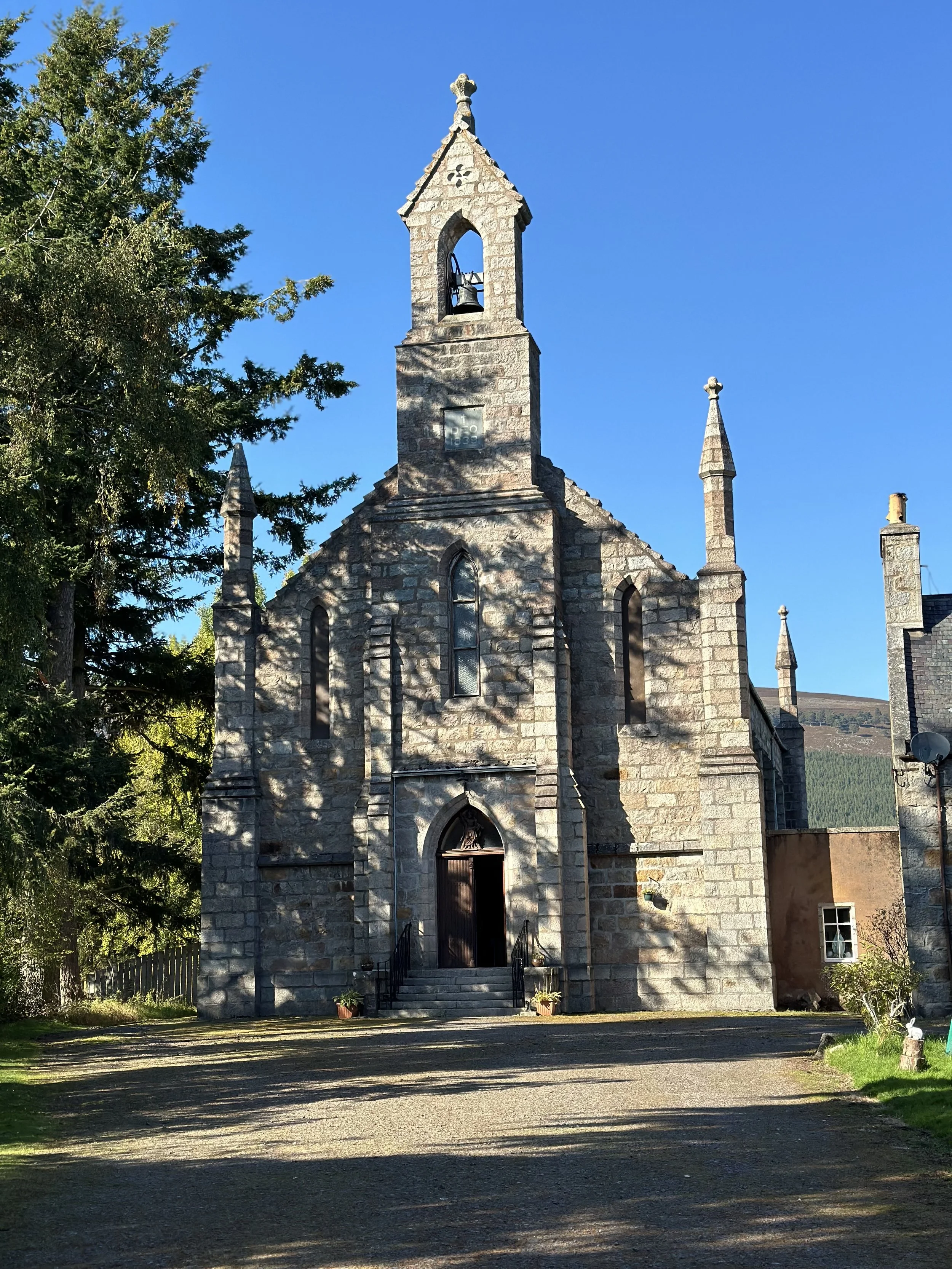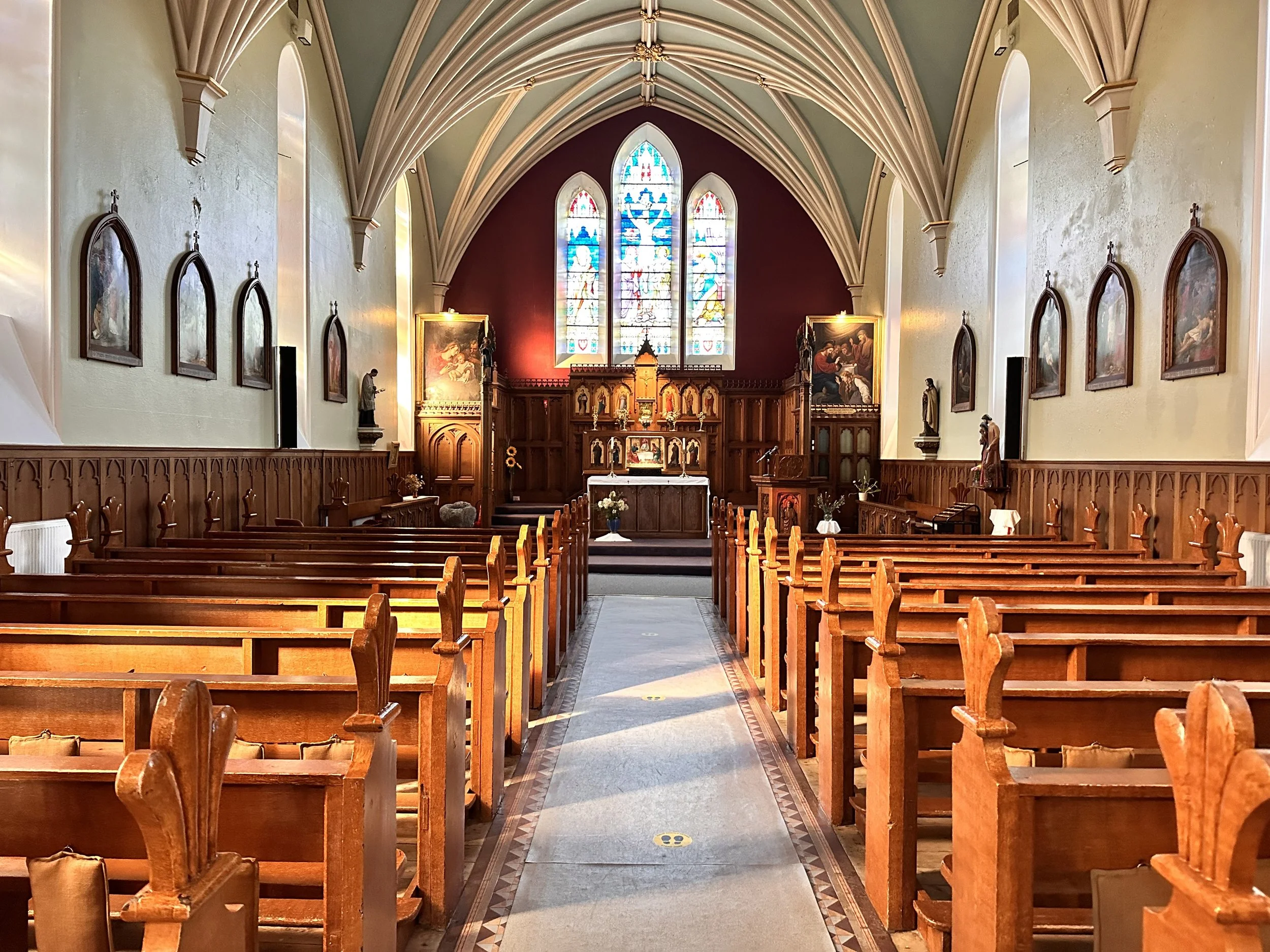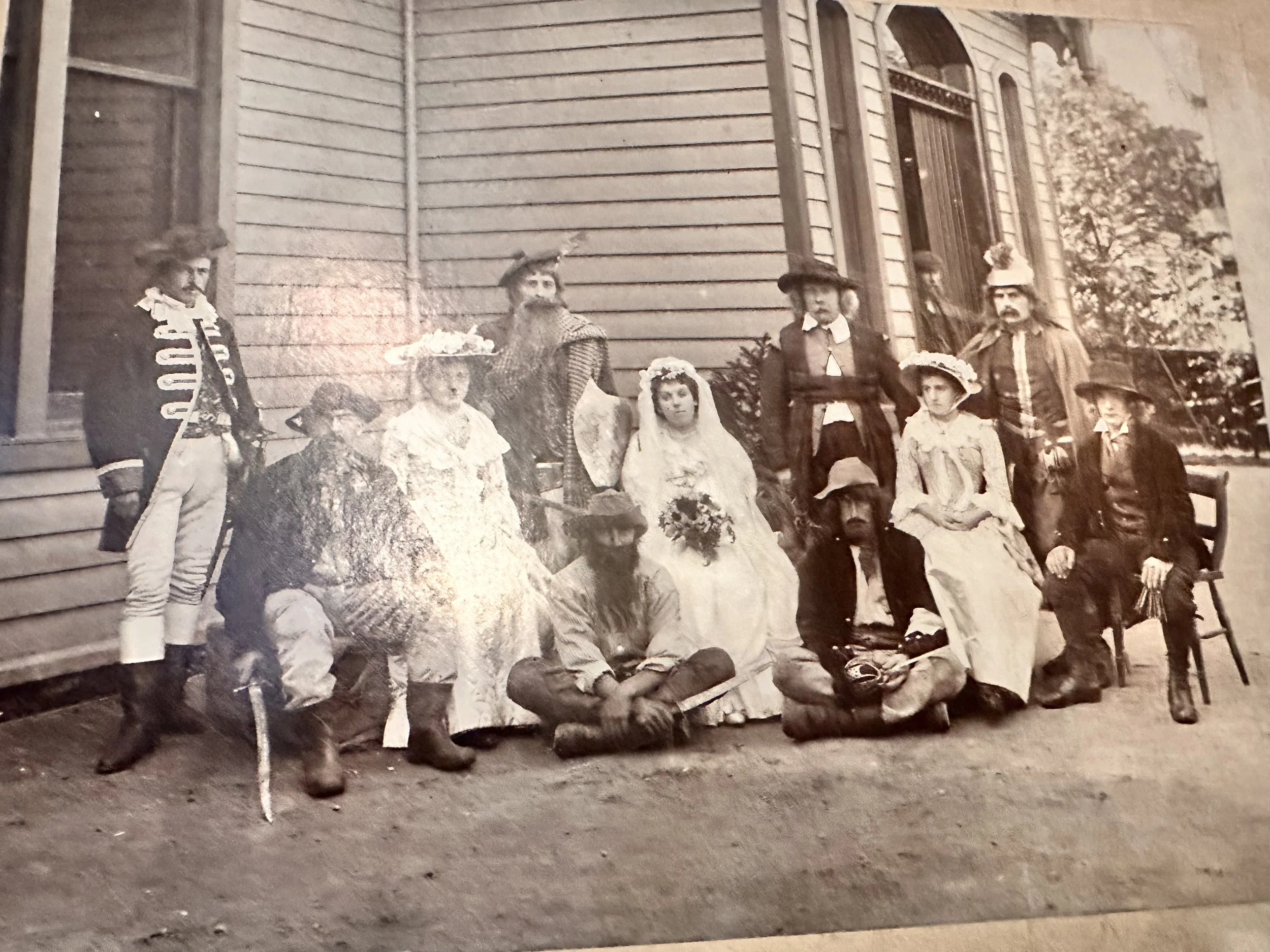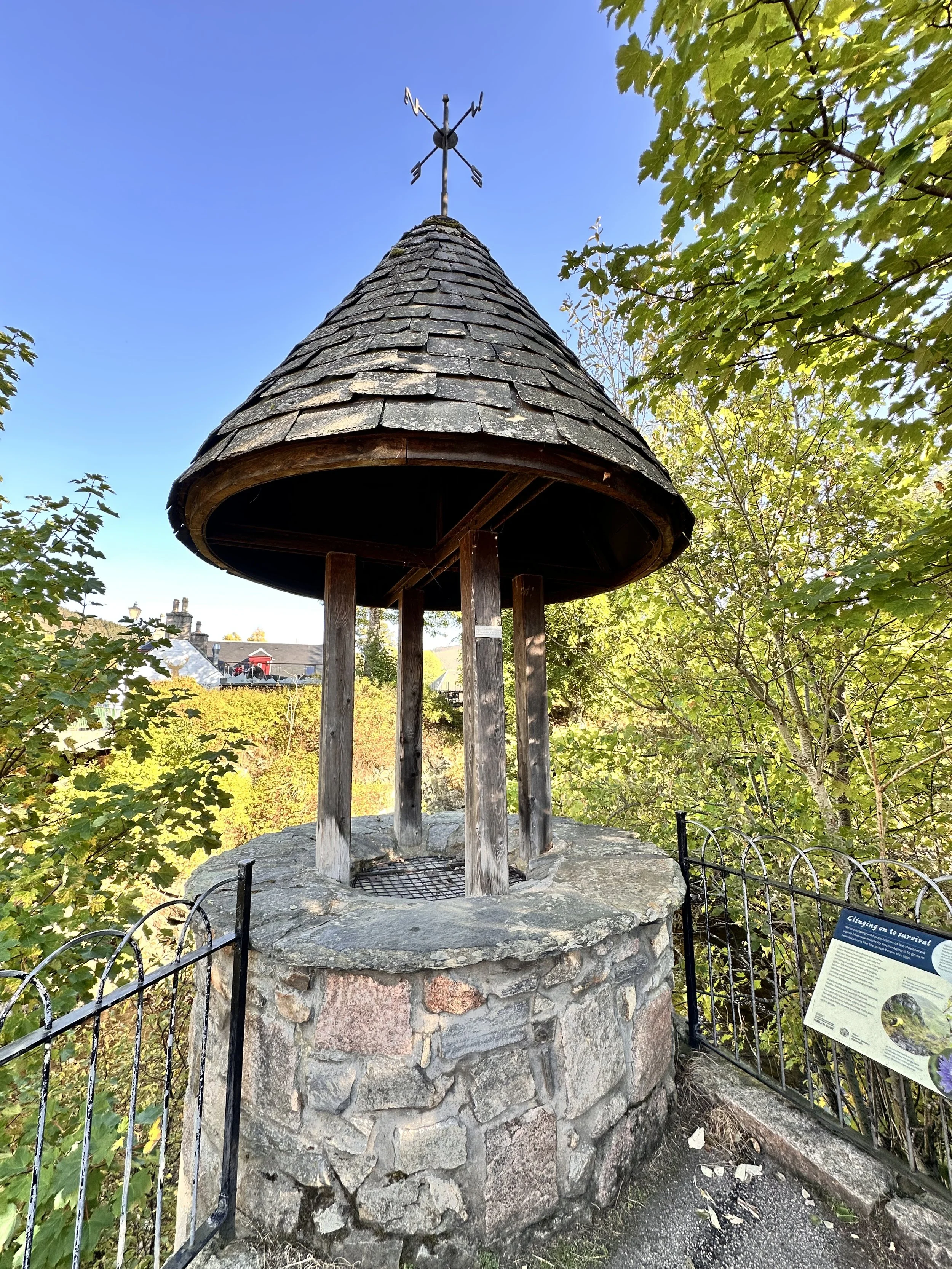Exploring Ballater/Braemar, Scotland
Time needed in this town: 3-4 nights for both
Ballater and Braemar are known for frequent royal visits, great shops and restaurants, and a bit more of a sophisticated, yet outdoorsy kind of feel. One minute, you could be walking down the streets of Ballater, only to run smack into an outdoor adventure fair; and the next minute, you could be in Braemar, dining in the Fife Arms just two days after the Queen. Yes, this happened to us.
But what really struck us about these two towns were how quaint they were, how refreshing the mountain air was, and how even the wealthiest of people walking around were also some of the most down-to-earth. We wish we had stayed longer and next time, we certainly will.
The below information is a complete guide of the best places to stay, the top rated places to dine and drink, and all there is to see and do. We’ve also included transportation tips, as well as a summary of this incredibly historic town!
Jump To
Where to Stay
Since the 19th century, The Fife Arms has been at the heart of Braemar, the town famous for the annual Highland Games (or Braemar Gathering as it is known locally), which draws visitors from around the world; as well as Queen Victoria’s visits, which inspired her to purchase Balmoral just 15 minutes away.
Reopening at the end of 2018, this Victorian coaching inn has been remodeled for the 21st century by its world-renowned owners, Iwan and Manuela Wirth, co-Presidents of the international gallery, Hauser & Wirth. They brought together architects, designers, and artists, many of whom have strong links to Scotland. The interiors, by Russell Sage, feature a thoughtful collection of historic objects, whimsical curios, artwork (think Picasso) and artifacts (think Robert Burns’ fireplace mantel), as well as newly commissioned contemporary works.
The hotel consists of 46 luxurious bedrooms, each with unique furnishings and decorations that tell a local story. We stayed in the “Nature and Poetry” wing, specifically
”The Stalker” room, which very much lived up to its name - deer antlers and other hunting artifacts filled our room.
It also consists of two restaurants, The Clunie and The Flying Stag; a drinks lounge named after Elsa Schiaparelli; and a world-renowned whisky bar called, “Berties” (see “Where to Dine & Drink” for more on those.
Our experience was so wonderful that we are very much looking forward to coming back and spending more time in the area.
other recommendations
Where to Dine & Drink
Bertie’s Bar (Braemar - Fife Arms) -
NOTE: Start at 1:56 on the video for Bertie’s.
Cambus O’May Cheese Co. (Ballater)
Fine Scottish cheeses have been sold there, for over 50 years.
Clachlan Grill (Ballater)
Per their site, “Our Head Chef has carefully designed the Clachan Grill’s menu to reflect the diverse ingredients Scotland has on offer, drawing inspiration from Scottish classics, while elevating them to the level of a modern Grill.”
Darroch Learg Restaurant (Ballater)
Per their site, “Menus at Darroch Learg change regularly; our chefs are influenced and inspired by the exceptional standard of local, seasonal produce. We are also known for our extensive and interesting wine list.”
Deeside Deli and Garden Shop (Ballater)
They stock a wide range of local and fresh produce, including fresh fruit and vegetables, a Deli counter, flowers, garden supplies, and much more.
Farquharsons Bar and Kitchen (Braemar)
Serving homemade Scottish fare.
Fish Shop Restaurant (Ballater)
Their menus focuses on shellfish and day boat fish, with the addition of select game, meat and vegetables from surrounding farms and estates.
Gordon’s Tea Room and Restaurant (Ballater)
A tea room, serving fresh scones as well.
Rothesay Rooms (Ballater)
Rothesay Rooms was established as a pop-up eating destination by HRH The Prince of Wales. It features coffee drinks and traditional Scottish hot dishes and baked goods.
Shorty’s of Ballater (Ballater)
Serving many flavors of ice cream.
The Balmoral Bar (Ballater)
Independent pub, serving quality food using fresh local ingredients, craft beers, lagers, real ales and wines in the centre of Ballater.
The Bothy Ballater (Ballater)
Per their site, “The Bothy Ballater (open 7 days a week) provides a warm friendly welcome and high quality ingredients in our breakfast, lunch and home baking selections, catering for a range of dietary requirements and offering both eat in and take away.”
The Clunie Dining Room (Fife arms - Braemar)
Per their site, “The finest Scottish produce is masterfully crafted into exquisite dishes that celebrate local, fresh and seasonal ingredients.”
NOTE: Start at 4:27 on the video for The Clunie Dining Room.
The Flying Stag (Fife arms - Braemar)
Things to See & Do
Ballater Golf Club
Ballater Golf Club was founded in 1892, originally as a nine-hole course, on land owned by the Laird of Invercauld. When farmland became available in 1905, the course was expanded to eighteen holes.
Ballater Highland Games
The Ballater Highland Games have been held in this town since 1864, and have been visited by many royalty over that time, and competed in by many famous athletes and champions.
The events in these games include, The Glenfiddich Heavy Events Championship and the Grampian Games Qualifying Championship, which encourages the younger athletes to participate in the heavy and field events.
The Ballater Highland Games are held annually on the second Thursday in August in Monaltrie Park.
Balmoral Cairns
In total, there are 16 stone cairns on the Balmoral estate in Deeside, including a single cairn on the adjoining Birkhall estate. The cairns commemorate members of the British royal family and events in their lives. The majority of the cairns were erected by Queen Victoria.
Balmoral Castle
Balmoral Castle is a large estate house in Aberdeenshire and is a residence of the British royal family. It is near the village of Crathie, 9 miles west of Ballater and 50 miles west of Aberdeen.
The estate and its original castle were bought from the Farquharson family in 1852 by Prince Albert, the husband of Queen Victoria. Soon afterwards, the house was found to be too small and the current Balmoral Castle was commissioned. The castle is an example of Scottish baronial architecture, and is classified by Historic Environment Scotland as a category A listed building. The new castle was completed in 1856 and the old castle demolished shortly thereafter.
The Balmoral Estate has been added to by successive members of the royal family, and now covers an area of 53,684 acres of land. It is a working estate, including grouse moors, forestry and farmland, as well as managed herds of deer, Highland cattle, sheep, and ponies.
Balmoral remains the private property of the monarch and is not part of the Crown Estate. It was the summer residence of the late Queen Elizabeth II.
Braemar castle
Constructed in 1628, by John Erskine, Earl of Mar, as a hunting lodge and to counter the rising power of the Farquharsons, it was no match for the clan as it was attached and burned in 1689 to prevent it from being used by Government troops. In 1716, the castle was forfeited to the Crown following the Earl of Mar's leadership of the 1715 Jacobite rising. The castle and lands were purchased by John Farquharson, 9th Laird of Invercauld, but the building was left in ruins until 1748 when it was leased to the government at a fee of £14 per year to serve as a garrison yet again. By the 1760s and for the next 40+ years, the land surrounding it was used for commercial woodland. By 1831, restoration began to provide a family home for the 12th Laird of Invercauld who entertained Queen Victoria there when she attended the Braemar Gatherings in the grounds of the castle. Since 2006, the castle has been leased to the local community.
CAIRNGORMS
The Cairngorms contains the finest collection of different landforms outside arctic Canada – from granite tors to heavings and leavings from Ice Age glaciers. The Spey, Dee, and Don valleys are major features of the lower ground. Around 2 million people visit the Cairngorms each year to ski, walk, and fish.
Want a private park tour? Click here.
Corgarff Castle (40 minutes away)
Corgarff Castle was built in 1530 by the Elphinstone family and leased to the Forbes of Towie. 41 year later, it was burned down by family enemy, Adam Gordon of Auchindoun, resulting in the deaths of 26 people, including Margaret Campbell, Lady Forbes, and her children. 36 years later, in May 1607, the castle was captured from Alexander, 4th Lord Elphinstone by Alexander Forbes of Towie and his companions, including a piper called George McRobie. They used hammers and battering rams to break down the gate, then fortified the house with a garrison of "Highland thieves and limmers".
In 1626, the castle was acquired by the Earl of Mar and in 1645, it was used as an assembly point by the troops of the Marquis of Montrose. Sadly, it was burned again, both in 1689 and 1716 by Jacobite supporters. It was resettled by the Forbes family in 1745, but had to be forfeited due to their Jacobite leanings.
In 1748, it was bought by the British government and rebuilt and extended as a barracks, which continued on as its used until 1831. In 1961, the ownership of the castle was given to the Lonach Highland and Friendly Society.
Craigendarroch Hill
Craigendarroch hill sits at the back of Ballater and can be hiked in under 2 hours (in normal conditions) as a 2.3-mile loop, giving you some beautiful views of Aberdeen-shire.
crathes Castle (1 hour away)
Built in the 16th century, Crathes Castle is in the historic county of Kincardineshire. This harled castle was built by the Burnetts of Leys and was owned by the family for almost 400 years. The castle and its grounds are currently owned and managed by the National Trust for Scotland and are open to the public.
crathie kirk
Since the 9th century, Crathie Kirk has been a place of Christian worship, when a church was founded on the banks of the River Dee by Saint Manire (Bishop of Aberdeenshire and Banff and a follower of Saint Columba, the pioneer of Christianity in Scotland). It is traditionally held that Manire baptized Pictish converts in a pool of the Dee, east of the modern village of Crathie. A single standing stone at Rinabaich is all that remains of Manire's church.
In 1805, a new church was built on the current site - Queen Victoria worshipped there from 1848, and every British monarch since that time has also worshipped there.
“Fun facts” about the Kirk:
Victoria's decision to worship at Crathie Kirk initially caused a scandal, particularly when it was discovered that she had received communion there. As Supreme Governor of the Anglican Church of England, it was expected that she would worship in the Scottish Episcopal Church, which recognized the authority of the archbishop of Canterbury, although to do so would have been illegal since in her own words "Scotch bishops are mere dissenters".
Anne, Princess Royal, married Timothy Laurence, then a commander in the Royal Navy, at Crathie Kirk. (The couple chose to marry in Scotland as the Church of England did not, at the time, permit remarriage after divorce.)
The British royal family attended the Sunday service here after the death of Diana, Princess of Wales, on the morning of August 31, 1997.
Drum Castle (1 hour away)
For over 700 years, Drum Castle has seen quite a bit! In 1323, Robert the Bruce gave the Irvine family the Royal Forest and Tower of Drum. In 1619, a Jacobean mansion house was added, and in the Victorian era, the lower hall was converted to a library, now containing around 4,000 books.
The beautiful walled garden on the estate is divided into quadrants that show how garden design has developed from the 17th to the 20th century, with an special focus on roses. In addition, the ancient oak forest adjoins the castle, providing a sense of continuity through the centuries and a home for red kites, roe deer, red squirrels, and badgers.
Dunnottar Castle (1.5 hours away)
For over 1000 years, Dunnottar Castle played a crucial role in Scottish history and holds many rich secrets of Scotland’s colorful past. It has played host to some of the nation's greatest historical figures, including William Wallace and Mary Queen of Scots, and is famous for its role in saving the Scottish Crown Jewels from Oliver Cromwell's army in the 1650s.
What you see today are a couple of surviving 15th and 16th century castles, believed to have been fortified during the early Middle Ages, as well as ruins spreading over 3 1/2 acres, and 150 ft. drops into the North Sea.
George Strachan
Established in 1926, George Strachan Ltd., General Merchants is a family business with premises in Aboyne and Ballater, on Royal Deeside, where an extensive range of goods and services are available. Groceries, cheeses, shortbread, oatcakes, over 400 whiskies, 75 gins, as well as other spirits and wines, are sold here. They are open 9am – 5pm, Monday to Saturday.
GlenMuik Church
Opened in 1800, Glenmuik Church still stands today, with modern improvements made along the way, including a winding mechanism in 1879 for the clock, which was later electrified in 1982; a vestry added in the early 1850s.
Glen Tanar
Glen Tanar contains part of the largest area of the native Caledonian Forest. This glen has spectacular woodland walks, mountain biking, trout fishing, and more. There’s also quite a bit of wildlife around there, including red squirrels, otters, and Scottish wildcats.
Kindrochit Castle
Kindrochit Castle is a ruined 14th-century fortification in Aberdeenshire, Scotland, and is located at Braemar, in a strategic position on the banks of the Clunie Water, a tributary of the River Dee.
Kindrochit was a hunting seat of King Robert II, who issued charters here, between 1371 and 1388. In 1390, Robert III granted a license to Malcolm Drummond to build a new tower on the site. The present ruins comprise the ground floor of the tower, measuring around 63 ft. by 43 ft. The site of the earlier royal lodge was excavated in the 1920s and included a hall around 98 ft. by 30 ft., with square towers at each corner.
Loch Muick
Loch Muick is a stunning loch located within the Balmoral estate. You can enjoy breathtaking views of Broadcairns and the White Mounth Munros, all just a short drive or cycle from the estate.
NOTE: It’s a 7.75-mile loop.
lochnagar
Dark Lochnagar is the highest, most popular munros in Scotland. The total circuit hike is 11.75 miles and should not be walked if a novice at hiking.
Muir of Dinnet National Nature Reserve
The Muir of Dinnet National Nature Reserve is just a stone’s throw away from Ballater Village. Those visiting can get lost in one of Scotland’s most secluded heaths and even dip their feet in the surrounding lochs.
Burn O’Vat
Located within Muir of Dinnet Reserve, the walk to Burn O’Vat is a lovely woodland walk with a decent path most of the way. The Burn O’Vat, itself, is a mountain stream in Deeside, Scotland, rising on Culblean Hill and flowing into Loch Kinord. The Vat, a pothole of glacial origin, lies upon its course.
FUN FACT: It’s said that it’s one of the many hiding places used by notorious Scottish outlaw, Rob Roy.
Old Royal Station
Opened on October 17, 1866 by the Aboyne and Braemar Railway, this was the 3rd of a series of openings (Aboyne to Ballater), by three different companies, to connect Ballater with Aberdeen. All three sections of the branch were operated by the Great North of Scotland Railway (GNSR) and in 1876, were all acquired by it.
In 1923, the GNSR became part of the London and North Eastern Railway during the Grouping; then it was passed onto the Scottish Region of British Railways during the nationalization of 1948. The station closed to passengers on February 28, 1966, then for good five months later.
Today, The Old Royal Station still has its famous replica Royal Carriage, which complements its tearoom. There’s even a bus station where you can depart from the Station and explore the town.
Royal Lochnagar Distillery
Royal Lochnagar is renowned for its outstanding flavor and incredible location. Sitting at the foot of the Cairngorm mountains, a mile from Balmoral Castle, this small craft distillery was granted the title Royal Lochnagar in 1848 following a visit, at the invitation of founder John Begg, by Queen Victoria and Prince Albert. Royal Lochnagar combines malted barley and the pure water of the nearby crystal clear Scarnock springs to create a golden and delicious Highland Single Malt Scotch Whisky.
NOTE: You must book your tour in advance.
St. Andrew’s Catholic Church
St. Andrew's Roman Catholic Church was built in 1839, which included an attached presbytery in 1864m as well as gardens. The church was largely funded by Lady Carmarthern, with Father Lovi overseeing the building process. He donated the bell and organ.
Wishing Well
This wishing well is directly across from the Fife Arms and overlooks the Clunie River. You can deposit coins into tiny slots in the cover, so make a wish!
How to Get Around
Car
From Aberdeen - Ballater is 17 miles east of Braemar on the A93, or 40 miles west of Aberdeen. Journey time from Aberdeen is approximately 2 hours.
From Perth -Ballater is situated on the A93 Aberdeen to Perth road. Perth has good links to the south on M90, from Edinburgh or A9/M80, from Glasgow.
From Dundee -From Dundee and St Andrews, the A90 north links to the very scenic route of the B974 to reach the A93.
From Inverness -From Inverness, travel south on the A9 to Grantown-on-Sprey and then the A939 via Tomintoul to Ballater.
NOTE: It is suggested to rent a car to make the journey as even the railway will require a two-hour bus ride once at the Aberdeen station.
A History Summary
1300s - The area became part of the estates of the Knights Hospitaller of the Order of St John.
Early 1700s - The Pannanich Wells were discovered to contain healing, and Francis Farquharson decided to set about developing them. This proved extremely popular with the society of that time.
1783 - A bridge was built over the River Dee.
1798 - The Church on the Green was built.
1852 - Queen Victoria purchased Balmoral Castle.
1864 - The Highland Games began.
1866 - The railway first came to Ballater when the Deeside Railway built a station.
1886 - The Deeside Railway station was rebuilt to a grander scale.
1966 - The Deeside Railway station closed.




